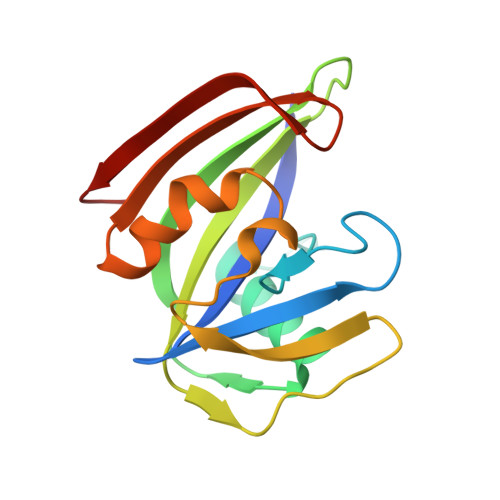Potent and Selective Inhibitors of Mth1 Probe its Role in Cancer Cell Survival.
Kettle, J.G., Alwan, H., Bista, M., Breed, J., Davies, N.L., Eckersley, K., Fillery, S., Foote, K.M., Goodwin, L., Jones, D.R., Kack, H., Lau, A., Nissink, J.W., Read, J., Scott, J.S., Taylor, B., Walker, G., Wissler, L., Wylot, M.(2016) J Med Chem 59: 2346
- PubMed: 26878898
- DOI: https://doi.org/10.1021/acs.jmedchem.5b01760
- Primary Citation of Related Structures:
5ANS, 5ANT, 5ANU, 5ANV, 5ANW - PubMed Abstract:
Recent literature has claimed that inhibition of the enzyme MTH1 can eradicate cancer. MTH1 is one of the "housekeeping" enzymes that are responsible for hydrolyzing damaged nucleotides in cells and thus prevent them from being incorporated into DNA. We have developed orthogonal and chemically distinct tool compounds to those published in the literature to allow us to test the hypothesis that inhibition of MTH1 has wide applicability in the treatment of cancer. Here we present the work that led to the discovery of three structurally different series of MTH1 inhibitors with excellent potency, selectivity, and proven target engagement in cells. None of these compounds elicited the reported cellular phenotype, and additional siRNA and CRISPR experiments further support these observations. Critically, the difference between the responses of our highly selective inhibitors and published tool compounds suggests that the effect reported for the latter may be due to off-target cytotoxic effects. As a result, we conclude that the role of MTH1 in carcinogenesis and utility of its inhibition is yet to be established.
Organizational Affiliation:
Oncology Innovative Medicines Unit, AstraZeneca , 35S47 Mereside, Alderley Park, Macclesfield, Cheshire SK10 4TG, United Kingdom.



















